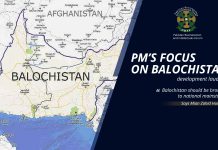
(April 10, 2019)
President Pakistan Businessmen and Intellectuals Forum (PBIF), President All Karachi Industrial Alliance (AKIA), Senior Vice Chairman of the Businessmen Panel of FPCCI and former provincial minister, Mian Zahid Hussain on Wednesday said that it’s looking impossible to hit GDP growth target of 6.2% during the current fiscal year. According to World Bank’s recent report Pakistan’s GDP growth is projected to slow down to 3.4 percent in fiscal year 2018-19, and expected to drop down further to 2.7 for the fiscal year 2019-2020 but if government introduces some emergency reforms for the economic growth the GDP growth rate can be increased to 4% for the next year.
The Veteran Business Leader told the business community that unstable GDP rates are the reflection of overall macro economic conditions of the country. Since Ayub khan till the present Government Pakistan has been going through instable economic situations. During Ayub Khan’s period GDP average was 7%, in Yahya Khans regime average GDP was 8%, in Z.A Bhutto’s era it was 3%, during Zia-ul-Haq’s administration it was 6%, in Muhammad Khan Junejo’s governance average GDP was 7%, In Benazir Bhutto’s first government it was 5% and remained same during the Nawaz Sharif’s first and Benazir’s second terms. In Nawaz Sharif’s second terms the Average GDP was 3% which remains stable during the Martial Law period of General Pervez Musharraf, till the GDP growth rate of 6% achieved by Muslim League Q’s government which again dropped down to 3% in the last PPP government led by Asif Zardari. But it increased to 5.8% again in the Governance of Nawaz Sharif which was the highest achieved GDP growth for the last 10 years.
The Former Minister said that achieving a long lasting economic stability and growth must be driven by production, investment, industrial growth, easy taxation polices, ease of doing business, cost reduction and stable political environment are mandatory. Some betterment have been shown in the economic situation given to the policies of current government as trade deficit has reduced by 14 percent to $ 23.4 billion, exports inclined by 3 percent, imports declined by 6 percent and remittances rose by 11 percent. However, a mere 3 percent increase in exports despite devaluation of 35 percent in PKR against USD is a question mark. To strengthen exports government is further required to review FTAs and search for new international destinations for Pakistani products.
Trade environment uncertainty should be removed as due to uncertain environment the foreign investment has declined by 23 percent in the ongoing fiscal year and inflation has attained maximum level of 9.4 percent in the last ten years. The stock exchange showed a down turn trend in the April 2019 and KSE-100 index is descended to 36,921 points from 38,423 points which shows the market and trade uncertainty. It is vital to take revolutionary measures to improve GDP in all sectors including education, health, energy, industrialization and infrastructure, he added.































